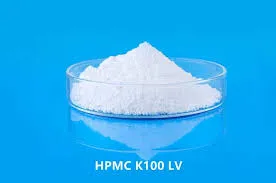
ਨਵੰ. . 12, 2024 15:59 Back to list
hydroxypropyl methyl cellulose
Understanding Hydroxypropyl Methylcellulose Properties, Applications, and Benefits
Hydroxypropyl Methylcellulose (HPMC) is a versatile and widely used compound in various industries, particularly in food, pharmaceuticals, and construction. As a non-ionic, cellulose-based polymer, HPMC boasts unique properties that make it an invaluable ingredient for diverse applications. In this article, we will delve into the characteristics, uses, and benefits of hydroxypropyl methylcellulose.
What is Hydroxypropyl Methylcellulose?
HPMC is synthesized from natural cellulose through a series of chemical processes that involve the substitution of hydroxyl groups in cellulose with hydroxypropyl and methyl groups. This modification enhances its solubility and functionality in various formulations. HPMC is typically available in various grades, each tailored for specific applications based on viscosity, gel strength, and solubility.
Properties of HPMC
One of the most notable properties of hydroxypropyl methylcellulose is its ability to form gels and films when mixed with water. When HPMC is dissolved in hot or cold water, it forms a viscous solution, making it an excellent thickening and stabilizing agent. This property is particularly beneficial in food products, where it helps maintain texture and consistency.
Additionally, HPMC has excellent water retention capabilities, which makes it suitable for use in applications requiring moisture control. Its non-ionic nature means that it is less prone to interact with other ingredients, allowing for compatibility across a wide range of formulations. The chemical stability of HPMC at varying pH levels adds to its versatility, enabling its use in various environments.
Applications of Hydroxypropyl Methylcellulose
1. Food Industry
HPMC is widely used in the food industry as a food additive, known for its thickening, emulsifying, and stabilizing properties. It improves the texture of baked goods, dairy products, dressings, and sauces. For example, in gluten-free baking, HPMC can provide the necessary structure and moisture retention that is typically lacking in gluten-free formulations. As a low-calorie and plant-based ingredient, it is also suitable for a wide range of diets.
hydroxypropyl methyl cellulose

2. Pharmaceutical Industry
In pharmaceuticals, hydroxypropyl methylcellulose serves as a crucial excipient in the formulation of tablets and capsules. Its properties allow for controlled release of active ingredients, enhancing the bioavailability of medications. Furthermore, HPMC is utilized in ocular solutions as a lubricant to alleviate dry eyes and improve comfort for contact lens wearers.
3. Construction Industry
In the construction sector, HPMC is increasingly used in cement-based products such as tile adhesives, mortar, and plaster. It enhances the workability, adhesion, and water retention of these materials, ensuring a smoother application and improving durability. Additionally, HPMC helps to manage the setting times of cement, allowing for better control during construction projects.
Benefits of Using Hydroxypropyl Methylcellulose
The benefits of HPMC extend beyond merely enhancing product performance. Its plant-based nature means it is a safe and environmentally friendly option for various formulations. HPMC does not contain any animal-derived ingredients, making it suitable for vegetarian and vegan products.
Moreover, HPMC is non-toxic and hypoallergenic, which is particularly important for use in pharmaceuticals and personal care products. Its stability over a wide range of temperatures and pH levels means that it can be used in challenging environments without compromising effectiveness.
Conclusion
Hydroxypropyl methylcellulose is a remarkable compound that has made a significant impact across various industries. Its unique properties, including its thickening, emulsifying, and stabilizing abilities, make it a preferred choice in food, pharmaceuticals, and construction. As industries continue to evolve and innovate, the demand for effective and versatile additives like HPMC is likely to grow, ensuring its place as a staple ingredient in numerous applications. With its numerous benefits, HPMC not only enhances product performance but also aligns with the growing trend towards safe and sustainable formulations.
-
Versatile Hpmc Uses in Different Industries
NewsJun.19,2025
-
Redispersible Powder's Role in Enhancing Durability of Construction Products
NewsJun.19,2025
-
Hydroxyethyl Cellulose Applications Driving Green Industrial Processes
NewsJun.19,2025
-
Exploring Different Redispersible Polymer Powder
NewsJun.19,2025
-
Choosing the Right Mortar Bonding Agent
NewsJun.19,2025
-
Applications and Significance of China Hpmc in Modern Industries
NewsJun.19,2025







